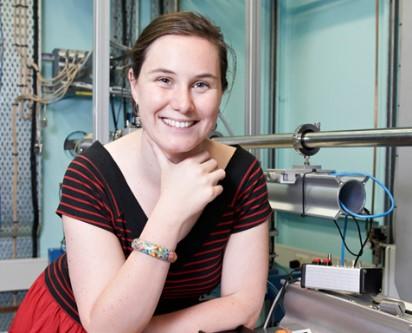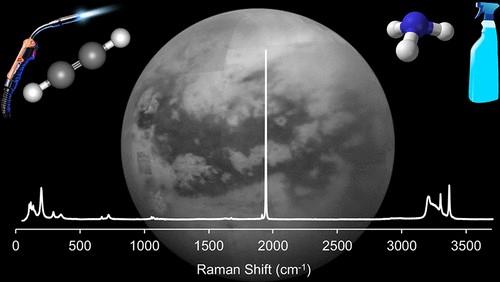Physics Seminar: Dr Helen Maynard-Casely
- Date: Mon, 19 Aug 2019, 4:00 pm - 5:00 pm
- Location: Darling West Lecture Theatre - Darling West building
- Cost: FREE
- Contact: Associate Professor Paul Jackson 8313 0269
- Email: p.jackson@adelaide.edu.au

Presenter
Dr Helen Maynard-Casely
Senior Instrument Scientist
Australian Centre for Neutron Scattering
ANSTO
Helen Maynard-Casely is a planetary scientist based at the Neutron Scattering, ANSTO, where she investigates materials relevant to the surface of the icy moons, Europa and Titan. Her journey to exploring these icy moons began with her degree in Planetary Sciences from University College London, and was followed by her PhD in high-pressure physics at the University of Edinburgh. Moving to Australia first to undertake a post-doctoral position at the Australian Synchrotron, she moved to the Bragg Institute in 2013 to work on the High Intensity Powder Diffractometer (known as WOMBAT).
Abstract
Exploring the materials of the solar system with Australia’s central facilities

Highlight image from a recent study that has investigated the potential of acetylene and ammonia to form a co-crystal that could be abundant on Saturn’s moon Titan [6]
Our solar system contains a great array of small planetary bodies that show remarkable variability in the chemistry, and subsequent materials, that form on their surfaces. From sulfuric acid hydrates that are spattered on Europa [1], to organic minerals that fall in flurries on Titan [2] to the plastic solids of methane and nitrogen on Pluto [3].
Sadly we’re yet to scoop any sample of these planets and bring them home, however informed by spectral observations from space missions such as Galileo, Cassini and New Horizons, we can re-create their surface chemistries and conditions in the lab.
What this has revealed that despite the ‘simplicity’ of the chemistry involved the surfaces are likely to be made up of a large array of materials with potentially planet-shaping properties.
I’ll overview some of the materials we’ve found [4] [5] [6], and why central facilities (like the OPAL neutron source and Australian Synchrotron) have been crucial for this work. Hopefully, I’ll also show how this is very much a growing business, and with new exoplanets being discovered daily there is still a wide range of materials that need to be investigated.
- Carlson, R.W., R.E. Johnson, and M.S. Anderson, Sulfuric acid on Europa and the radiolytic sulfur cycle. Science, 1999. 286(5437): p. 97-99.
- Cable, M.L., et al., Titan tholins: Simulating Titan organic chemistry in the Cassini-Huygens era. Chemical Reviews, 2011. 112(3): p. 1882-1909.
- Grundy, W., et al., Surface compositions across Pluto and Charon. Science, 2016. 351(6279): p. aad9189.
- Maynard-Casely, H.E., K.S. Wallwork, and M. Avdeev, A new material for the icy Galilean moons: The structure of sulfuric acid hexahydrate. Journal of Geophysical Research: Planets, 2013. 118(9): p. 1895-1902.
- Maynard-Casely, H.E., et al., A co-crystal between benzene and ethane: a potential evaporite material for Saturn's moon Titan. IUCrJ, 2016. 3(3).
- Cable, M.L., et al., The Acetylene-Ammonia Co-crystal on Titan. ACS Earth and Space Chemistry, 2018.
